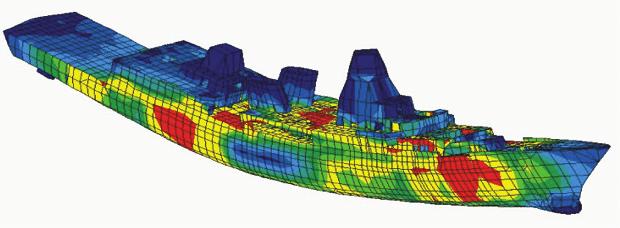SUNY Delhi Mechatronics Shows Importance of Diverse Skill Set
The Start of Something Good
Two students from SUNY Delhi are participating in an intensive, hands-on internship at CHESS.
Two students from SUNY Delhi are participating in an intensive, hands-on internship at CHESS.
On December 9th and 10th, CHESS hosted the first in a series of workshops for launching a Science Gateway on the Galaxy software platform (https://usegalaxy.org/) at CHESS. The workshop was open to members of the structural materials science synchrotron community for whom the X-ray Imaging of Microstructures Gateway, XIMG (pronounced “X-image”), will be developed. This work is funded by the National Science Foundation.
Predicting fatigue crack initiation in engineering alloys is a long-standing challenge. It requires model validation via precise quantitative comparison to measurements of deformation gradients across many length scales, particularly in the vicinity of stress concentration features.
A key enabling technology for the recent CHESS-U upgrade was the CHESS Compact Undulator (CCU). These devices deliver world-class high-energy x-ray beams to our experimental hutches at a fraction of the cost and requiring significantly less physical space than traditional insertion devices. First generation variable-phase CCUs, built by KYMA using technology licensed from Cornell, presently generate x-rays for 6 of the 7 operating beamlines at CHESS.
Recent advances have enabled room-temperature additive manufacturing (AM) of carbon fiber composite parts with high stiffness and strength. An AM method called direct ink write (DIW) is used, wherein a self-supporting fluid material – in this case, an epoxy resin composite – is extruded through a nozzle to print parts with custom shapes, which are thermally cured after printing. To achieve the superior properties required by aerospace applications, characterization of the morphology is crucial, but has proven exceedingly difficult to date.
The AFOSR announced approximately $16.1 million in grants to 36 scientists and engineers from 27 research institutions and businesses. The objective of the program is "to foster creative basic research in science and engineering, enhance early career development of outstanding young investigators, and increase opportunities for the young investigators to recognize the Air Force Mission and the related challenges in science and engineering."
While Jacob has been at CHESS as a Staff Scientist since 2012, he is excited to be transferring to his new directorship. We asked him a few questions about his career so far and his hopes for the future of CHEXS.
Could you share a bit about your background and interests?
To realize the full potential of multi-scale modeling, integrated computational materials engineering (ICME), and the materials genome initiative (MGI), especially in regards to structural materials, typically requires knowledge of single crystal elastic constants.

The work described here uses high-energy, high-intensity X-ray techniques to pr